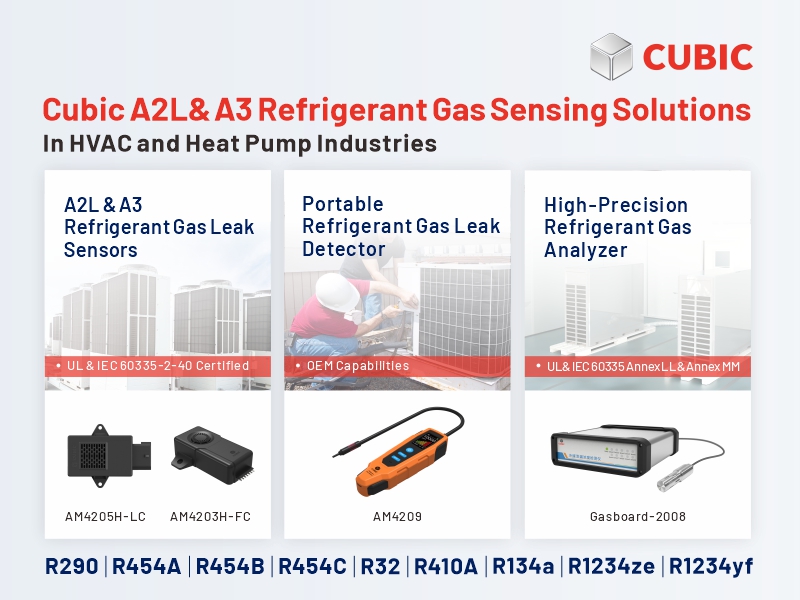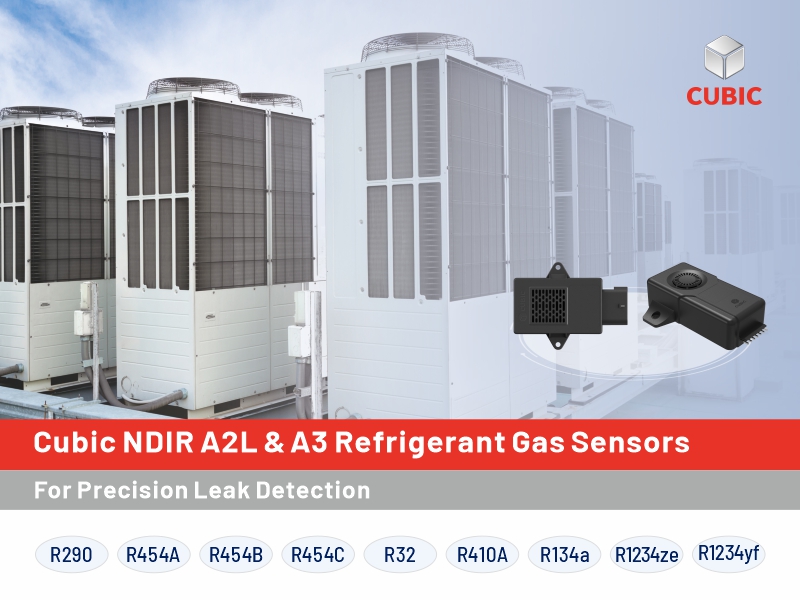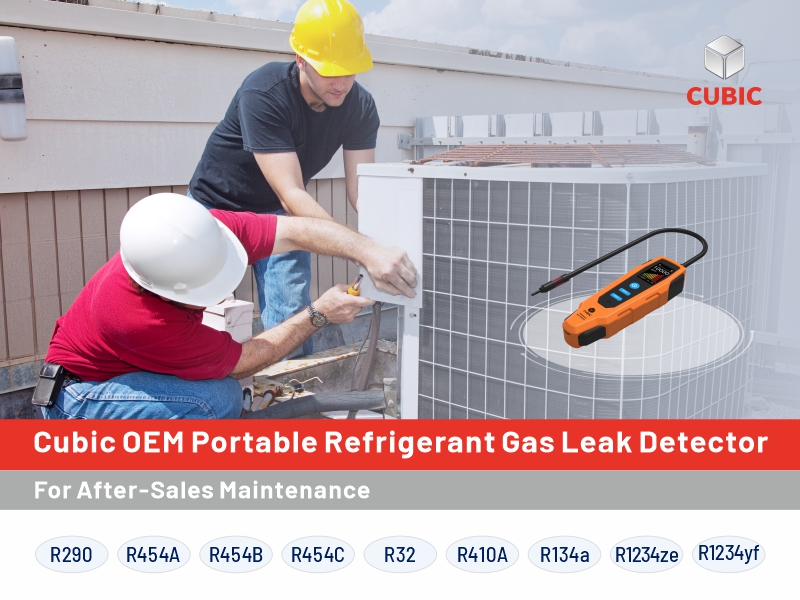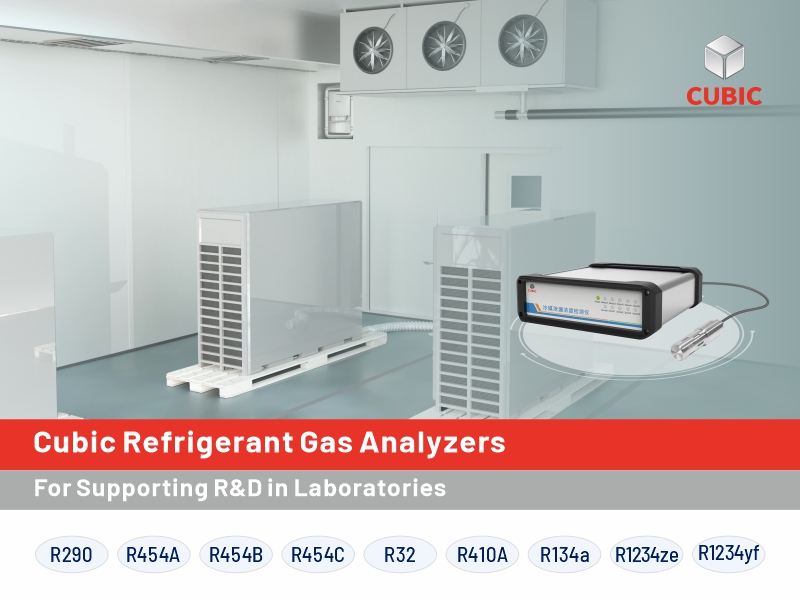As climate change becomes increasingly severe, many governments and enterprises have set greenhouse gas reduction targets worldwide. Europe is continuously at the forefront of environmental protection and climate change response, with refrigerant replacement being a key regulation.

In recent years, the EU and its member states have successfully introduced strict regulations and policies to promote the elimination of high-GWP refrigerants and the popularization of low-GWP refrigerants. For example, the EU F-Gas Regulation (517/2014) stipulates a timetable for the gradual reduction of the use of hydrofluorocarbons (HFCs), requiring the applications of HFCs to be reduced to 21% of the 2015 level by 2030.
According to the EU F-Gas Regulation, the following products and equipment have been added to the market prohibition list:
- From 2025, refrigerators and freezers for commercial use that contain F-gases with a GWP of 150 or more
- From 2026, domestic refrigerators and freezers, and self-contained refrigeration equipment, except chillers
- From 2027 through to 2030, stationary chillers of various types
- From 2027 through 2033, self-contained and split air-conditioning equipment and various heat pumps of various types
The implementation of F-gas regulation has extensively promoted the application of low-GWP refrigerants. However, the widespread adoption of low-GWP refrigerants has also brought new technical challenges and safety issues, especially the potential for refrigerant gas leakage in equipment such as heat pumps, which may lead to explosions or fires.
Refrigerant Leak Detection Technologies
Effective refrigerant leak detection solutions in HVAC&R and heat pump applications are essential to mitigate the risks.
The market's mainstream refrigerant leakage detection technologies mainly include non-dispersive infrared (NDIR), ultrasonic, thermal conductivity, and photoacoustic spectroscopy (PAS).
- Photoacoustic spectroscopy technology detects leaks by detecting the sound wave signals generated by refrigerant molecules after absorbing light energy of a specific wavelength. PAS has high selectivity of target gases but is also highly sensitive to environmental interference, requiring strong noise reduction and pressure compensation.
- NDIR technology uses the absorption characteristics of refrigerant molecules in specific infrared bands for detection. It has the advantages of fast response speed, good stability, and moderate cost, and is widely used in industrial and commercial fields.
- Ultrasonic technology detects refrigerant leaks by detecting high-frequency sound waves. It is suitable for detecting large and high-altitude areas, but is easily disturbed by environmental noise.
- Thermal conductivity technology is based on the difference in thermal conductivity between refrigerant and air. Although the cost is low, the sensitivity and selectivity are relatively poor.
However, both ultrasonic technology and thermal conductivity can barely achieve the measurement of A3 refrigerant gas propane (R290). Ultrasonic technology is applied to identify gases based on the difference in sound velocity between different media, and thermal conductivity identifies gases based on different thermal conductivity coefficients. The sound velocity and thermal conductivity coefficient of propane and air are very close, limiting the measurement of propane-based technologies.
NDIR technology has obvious advantages in measurement accuracy, high selectivity, stability, and anti-interference. It is particularly suitable for leak detection of flammable refrigerants such as R290. NDIR sensors can monitor the refrigerant concentration in real time, issue alarms quickly, and effectively prevent safety accidents.
Specifically, NDIR technology shows significant advantages in R290 leak detection. First, NDIR sensors are highly sensitive and selective to R290 and can accurately detect low-concentration leaks. Secondly, NDIR technology has a fast response speed and can issue an alarm early in case of a leak, buying precious time for emergency measures. NDIR equipment also has good stability, long service life, and low maintenance costs, making it suitable for large-scale promotion and application.
In practical applications, NDIR sensing technology has been widely deployed in the refrigerant detection market for decades. From early applications for R744 (CO₂) detection to current adoption for R290 (propane) detection, NDIR technology has been proven as a reliable and accepted sensing technology and has been adopted by numerous internationally famous brands in the HVAC&R Industry.
Unlike emerging technology, which is still in the early stages of industrial adoption and lacks widespread market validation, NDIR technology is the preferred choice, featuring a high level of maturity, stability, reliability, and market-proven performance in refrigerant gas detection.
Cubic NDIR Refrigerant Gas Leak Sensing Solutions
Specializing in NDIR technology for over 20 years, Cubic, a leading manufacturer of gas sensors and gas analyzers, has accumulated extensive experience in NDIR technology applications.
Cubic has specially developed comprehensive NDIR refrigerant leak detection sensing solutions using IEC 60335-2-40 certified sensors, detectors, and analyzers. These solutions detect A2L and A3 refrigerant gas leakages, including R32, R454A, R454B, R454C, and R290, which meet a broader range of application requirements for the HVAC&R and heat pump industries.

Cubic’s NDIR refrigerant gas sensors offer precise detection of A2L and A3 gases, including propane, even at low concentrations - supporting early leak alerts for enhanced safety. Engineered with a specialized hardware design and proprietary algorithms, the sensors ensure quick and accurate response, long-term stability (over 15 years), and reliable operation in tough environments like condensation and extreme cold.
To support seamless integration, Cubic provides advanced features such as configurable single/dual relay outputs, a wide 12–24V DC/AC power range, and Modbus/RS485 communication - delivering a flexible, scalable solution for refrigerant leak detection and system safety management.

Cubic also offers OEM-friendly, lightweight, and easy-to-use portable refrigerant leak detectors, ideal for after-sales service and maintenance. Built on proven NDIR technology, the detector can be customized to detect a wide range of refrigerants, including HFCs, HFOs, and blends like R32, R290, R410A, R134a, R454 series, and R1234 variants. It delivers fast response, ppm-level sensitivity, strong anti-interference, and long service life. Cubic also provides end-to-end support - from sensor integration and hardware/software design to mold development, prototyping, and mass production - ensuring a complete solution for leak detection applications.

Cubic refrigerant gas analyzers can be applied for refrigerant analysis across HVAC production lines, R&D labs, and third-party compliance testing. Powered by NDIR technology, they offer high measurement accuracy, long-term stability, and advanced multi-point calibration to ensure full-range linearity and precision.
Capable of detecting both single and multiple refrigerant components - including R32, R290, R454A/B/C, R1234yf, and more - the analyzers are designed to meet UL and IEC ANNEX LL/MM standards.
In HVAC manufacturing, they serve as reliable reference tools for refrigerant control and calibration. For R&D teams, they support sensor validation, leak simulation, and system airtightness testing. In third-party labs and research institutions, Cubic analyzers enable professional-grade refrigerant testing and certification, supporting tasks such as sensor performance evaluation and system leak compliance testing.
With a global landscape, Cubic can offer flexible sensing solutions, quickly respond to market demands, and provide high-quality service, better meeting the evolving needs of different markets and further enhancing customer satisfaction.
Through a series of refrigerant leak detection product portfolios, from refrigerant leak gas sensors to gas detectors and gas analyzers, Cubic is committed to providing a complete set of solutions to help companies deal with refrigerant management challenges.
Looking ahead, Cubic is committed to playing a key role in global gas safety monitoring and advancing dual-carbon goals. The company will continue to lead in developing innovative gas sensing technologies, aiming to build a safer, more sustainable future - one that reflects a strong commitment to environmental stewardship and industrial accountability.
For more detailed information on Cubic Complete Refrigerant Gas Leak Sensing Solutions, please visit the website at: https://en.gassensor.com.cn/RefrigerantGasLeakageMonitoringSensor/list.html or contact us via [email protected]

This information has been sourced, reviewed, and adapted from materials provided by Cubic Sensor and Instrument Co., Ltd.
For more information on this source, please visit Cubic Sensor and Instrument Co., Ltd.